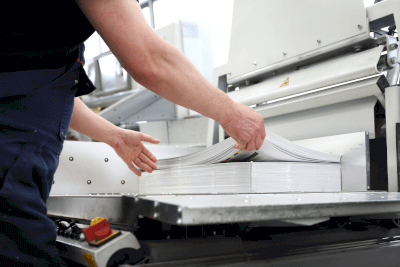What Is Binding Machinery?

Binding machinery binds paper into books or booklets through various methods such as gluing or stitching.
These machines accommodate different binding styles including saddle-stitching, perfect binding, ring binding, and others, suitable for small office environments to large-scale commercial production.
Uses of Binding Machinery
Binding machinery produces a wide range of bound products, from simple pamphlets to complex textbooks, depending on the binding technique.
1. Saddle Stitch Binding
Used for brochures and magazines, this method stitches along the fold of gathered sheets.
2. Perfect Binding
For thicker publications, pages are glued at the spine with a wrap-around cover.
3. Ring Binding
Documents and notebooks are bound with plastic or metal rings through punched holes.
Principle of Binding Machinery
Binding machines differentiate in binding methods, from wire stitching for standard books to thread sewing for durable, top-bound volumes.
1. Wire Binding
A straightforward method, stitching pages together with wire in either saddle-stitch or flat-binding fashion.
2. Glue Binding
Glue is applied to the spine for perfect binding, suitable for various publications.
3. Thread Binding
Pages are sewn with thread for added durability, often seen in top-bound books for long-term preservation.
Types of Binding Machinery
Binding machinery varies by the binding process it supports, from simple stitching to complex gluing methods.
1. Saddle-Stitch Binding
Sheets are folded, stitched at the center, then folded again to form the booklet.
2. Perfect Binding
Pages are glued at the spine and covered, creating a flat spine.
3. Ring Binding
Sheets are punched and bound with rings, allowing for easy opening and closing.
How to Select Binding Machinery
Selection should consider the binding type’s benefits and limitations, from cost-effective saddle stitching to flexible ring binding.
1. Saddle-Stitch Binding
Ideal for shorter documents, offering a flat opening but limited by page count.
2. Perfect Binding
Suitable for thicker catalogs, providing a professional finish but may not lay flat when opened.
3. Ring Binding
Offers versatility with 360° opening, perfect for documents requiring frequent page turning.